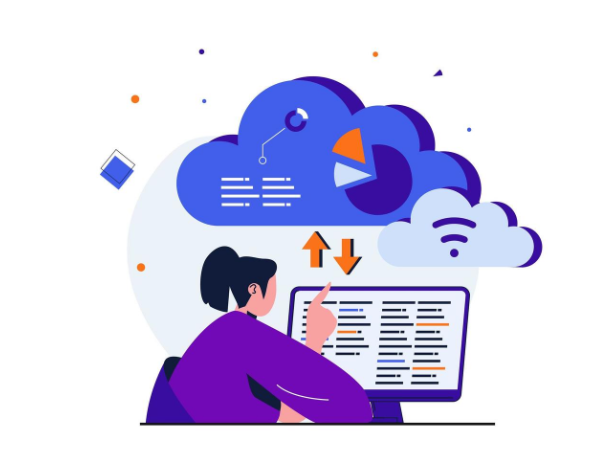On-Premises vs Cloud Computing Debate
As more businesses move to the cloud, the debate over on-premises vs cloud computing has become more heated. On one hand, on-premise computing has been around for decades and offers businesses greater control over their IT infrastructure. On the other hand, cloud computing is becoming more popular due to its scalability and cost-effectiveness. So how do you decide which option is best for you? In this article, we’ll explore the advantages and disadvantages of both on-premise and cloud computing and provide a cost comparison to help you make the best decision for your business.
Table of content
Table of Contents
As more businesses move to the cloud, the debate over on-premises vs cloud computing has become more heated. On one hand, on-premise computing has been around for decades and offers businesses greater control over their IT infrastructure. On the other hand, cloud computing is becoming more popular due to its scalability and cost-effectiveness. So how do you decide which option is best for you? In this article, we’ll explore the advantages and disadvantages of both on-premise and cloud computing and provide a cost comparison to help you make the best decision for your business.

Advantages of On-Premise Computing
On-premise computing is the traditional approach to IT infrastructure, where hardware and software are owned and managed by the business itself. This approach offers businesses several advantages.
First, businesses have greater control over their data. With on-premise computing, businesses can keep sensitive data secure and private without worrying about the security issues associated with cloud computing. Second, businesses can manage their own hardware and software, allowing them to scale more easily and make more customizations. With on-premise computing, businesses can tailor their IT infrastructure to meet their specific needs.
Third, businesses have greater control over their budget when using on-premise computing. With on-premise computing, businesses can buy hardware and software upfront and spread out the cost over several years. This allows businesses to plan for the future and budget accordingly. Finally, businesses can manage their own IT infrastructure. This gives them the ability to customize their systems and troubleshoot any issues quickly and efficiently.
Advantages of Cloud Computing
Cloud computing is a relatively new approach to IT infrastructure, where hardware and software are hosted and managed by a third-party provider. This approach offers businesses several advantages. First, businesses don’t need to manage their own hardware and software. This allows them to focus their resources on other areas of their business.
Second, businesses can scale quickly and easily. With cloud computing, businesses can add more resources on demand to meet their needs. Third, businesses can reduce their IT costs. With cloud computing, businesses only pay for the services they use, which can be much cheaper than buying hardware and software upfront.
Fourth, businesses can access their data from anywhere. With cloud computing, businesses can access their data from any device, anytime, anywhere. Finally, businesses don’t need to worry about the security of their data. Cloud providers use state-of-the-art security measures to keep data secure and private.
Disadvantages of On-Premise Computing
On-premise computing isn’t without its drawbacks.
First, businesses need to manage their own hardware and software, which can be time-consuming and expensive. This can be especially challenging for businesses with limited IT resources. Second, businesses need to purchase hardware and software upfront, which can be expensive and difficult to budget for.
Third, businesses need to manage their own IT infrastructure, which can be difficult and costly. Fourth, businesses need to worry about data security and privacy. With on-premise computing, businesses need to install and manage their own security measures to keep their data secure and private.
Disadvantages of Cloud Computing
Cloud computing isn’t without its drawbacks.
First, businesses must trust their third-party provider. With cloud computing, businesses are trusting a third-party provider to manage their data and keep it secure and private. Second, businesses need to have an internet connection to access their data. Without an internet connection, businesses won’t be able to access their data. Third, businesses need to pay for the services they use. With cloud computing, businesses need to pay for the services they use, which can add up quickly. Fourth, businesses need to be mindful of vendor lock-in. With cloud computing, businesses are locked into a specific vendor and may have difficulty migrating data or services to another provider.
Cost Comparison of On-Premises vs Cloud Computing
When it comes to cost, on-premise computing and cloud computing offer different advantages. With on-premise computing, businesses need to purchase hardware and software upfront, which can be expensive. This approach also requires businesses to hire IT staff to manage the hardware and software, which can be costly. With cloud computing, businesses only pay for the services they use. This allows businesses to scale quickly and easily without having to purchase hardware and software upfront. This approach also eliminates the need to hire IT staff, which can save businesses money in the long run.
On Premises vs Cloud: What’s the Best Option for You?
The debate over on-premises vs cloud computing is ongoing. Both approaches offer businesses different advantages and disadvantages, so it’s important to understand the pros and cons of each approach before making a decision. On-premise computing offers businesses greater control over their data and IT infrastructure, but it can be expensive and time-consuming. Cloud computing is more cost-effective and scalable, but businesses must trust their third-party provider to keep their data secure and private.
Ultimately, the best option for you depends on your business needs. If you’re looking for greater control and security, then on-premise computing may be the best option. If you’re looking for cost-effectiveness and scalability, then cloud computing may be the best option. No matter which option you choose, it’s important to weigh the advantages and disadvantages of both approaches to ensure you’re making the best decision for your business. With the right information, you can make an informed decision on which approach is best for you.


